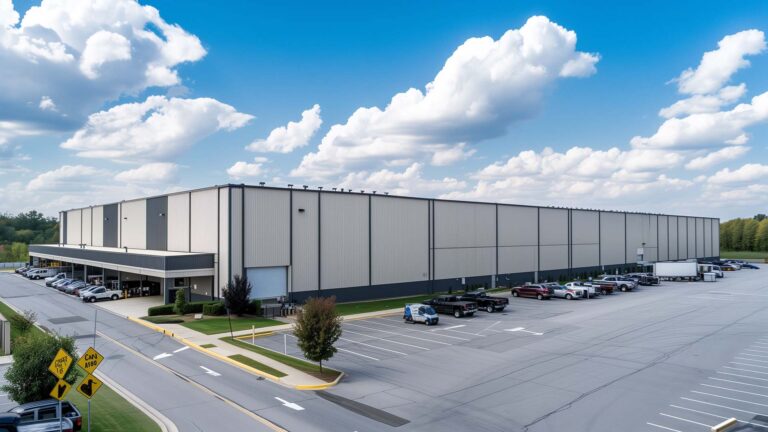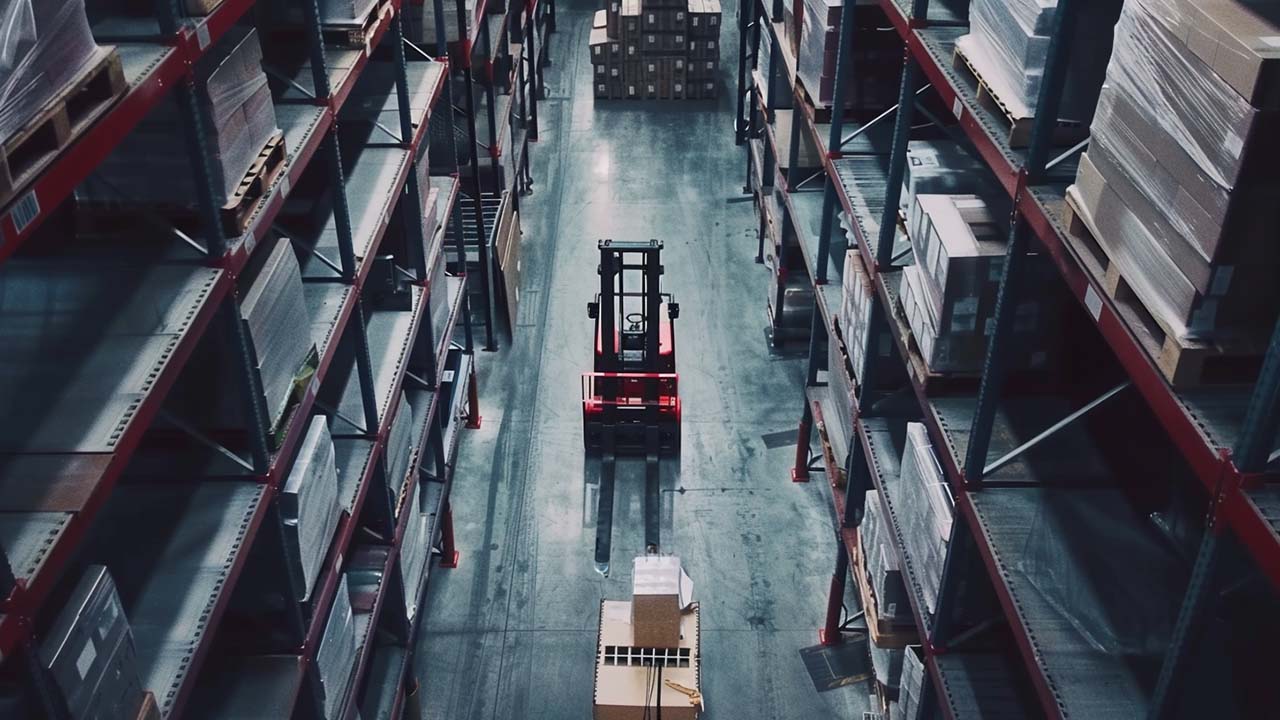
3PL Warehousing Insights for Efficient Supply Chain Management
How 3PL warehousing optimizes supply chains with advanced tech for storage, inventory management, and cost-effective logistics solutions.
Efficient warehousing is pivotal to streamlining the supply chain, yet businesses often grapple with how to implement this effectively. With an emphasis on practical solutions, this article navigates the complexities of the warehousing supply chain, revealing how savvy inventory management, strategic facility placement, and technology integration can converge to optimize operations. Let’s uncover the strategies that will help you reconcile supply with demand and steer clear of common bottlenecks.

Warehousing is critical to supply chain efficiency, providing real-time inventory management, strategic locations to reduce delivery times and costs, and advanced technologies like WMS and robotics to optimize operations.
Warehouses need to be adaptable to market demands with flexible storage solutions and scalable operations to handle peak seasons, offering value-added services such as kitting and pre-assembly to improve efficiency beyond mere storage.
Efficient warehousing practices can streamline the supply chain by reducing lead times and shipping costs, managing risks through protective measures, and preparing for future advancements with innovative technologies like AI, drones, and sustainable practices.

Warehousing serves as the heartbeat of supply chain operations, housing the lifeblood of goods that flow through the industry. These facilities are more than just storage spaces, they’re the epicenter of inventory management, playing a vital role in the reception, processing, and distribution of products which directly influences customer satisfaction levels.
Warehousing meticulously balances supply and demand, safeguarding surplus goods while redistributing supplies to high-demand areas. Modern warehousing technologies provide real-time visibility and instant, accurate inventory data, vital for effective decision-making and smooth supply chain operation.
Optimal alignment of workforce and workload demand in warehouses enhances supply chain processes, streamlining operations for minimal waste and optimal productivity.
Warehousing is the backbone of supply chain management, keeping the flow of goods running smoothly through dedicated unloading areas and techniques like cross-docking, which expedite the process of receiving and shipping goods. Privately owned and operated warehouses by entities such as suppliers and manufacturers serve to manage stock and maintain the availability of goods, thus making inventory management a fundamental aspect of supply chain warehousing.
The critical component of order fulfillment is also handled by efficient warehouse operations, ensuring that goods are delivered to customers in a timely manner.
The strategic location of a warehouse significantly impacts the flow of goods and potential distribution interruptions, thus optimizing logistics operations. A well-placed warehouse can enhance a business’s ability to attract more customers and investors due to improved accessibility and service delivery.
Strategically positioned near customers, warehouses can decrease transportation costs, reduce delivery times, and contribute to sustainability by lowering pollution levels.
Warehouse Management Systems (WMS) have revolutionized the warehousing industry by improving the efficiency and accuracy of inventory management and order fulfillment operations. Furthermore, a sophisticated WMS leads to better forecasting for inventory, aiding in cost management and service optimization. Companies like Amazon demonstrate the importance of a sophisticated Warehouse Management System (WMS) in optimizing shipments, using modern warehouses equipped with advanced robotics.
Advanced machinery and technology are transforming the face of warehousing. Some examples include:

In an ever-changing market landscape, flexibility is key. Warehouses have learned to adapt dynamically to market demands by offering flexible storage solutions and responding to demand spikes. This includes strategies like storing additional inventory of items that may see increased demand, such as during crises.
Whether it’s fluctuations in the economy or unpredictable market conditions, warehouses are well equipped to adjust their operations, influencing their space usage, workforce requirements, and transportation resources. Centralizing goods, warehouses enhance inventory accountability and enable real-time data access, facilitating better alignment of supply with market demand.
Warehouses accommodate specific needs by offering customized storage solutions. For example, temperature-controlled storage is necessary for goods that are sensitive to temperature variations, such as certain foods, chemicals, and materials. These temperature-controlled warehouses often utilize high-density storage systems to maximize the efficient use of space while also contributing to energy savings.
Advancements in warehouse storage technology, such as vertical carousel modules, have made more effective use of overhead storage space for high-density storage needs, utilizing efficient storage materials.
Warehouse operations typically scale up during peak seasons to accommodate periodic surges in fulfillment. This involves evaluating processes, such as hiring seasonal labor and managing accurate inventory. Warehouses can also partner with 3PL services which are designed to align with a company’s warehouse, fulfillment, and shipping needs, allowing businesses to pay only for the services they require. This flexibility ensures that warehouses can respond to changes in demand, helping to avoid stockouts.
Warehouses do more than just store goods; they add value beyond storage by implementing quality control measures within warehouses to contribute to accuracy in order packing. This results in lower return rates and boosts customer satisfaction. Warehouses also offer value-added services such as kitting or pre-assembly of products, which save time in order preparation, contributing to warehouse efficiency.
Other value-added services include packaging, labeling, and the customization of products to meet specific consumer needs.

Efficient warehousing operations can:
These benefits ultimately lead to improved customer service. Technological integration in warehouse operations supports improved procurement planning and fosters sustainable supply chain practices.
Advanced warehousing technologies such as Automated Guided Vehicles (AGVs) and smart inventory management systems significantly enhance the accuracy and efficiency of the order fulfillment process. Optimizing warehouse layout for item picking, using scalable automation to manage increasing order volumes, and deploying mobile workstations can drastically improve the speed and accuracy of order fulfillment.
Innovations like 3D bin packing technology, along with streamlined pick and pack services and the generation of automated picking lists, contribute to reducing raw materials use and ensuring faster, more efficient packing.
Warehouses employ various strategies to minimize delays and guarantee timely deliveries. Automated tracking systems in warehouses help in optimizing product flow, effectively reducing delays and inefficiencies within the supply chain. Maintaining accurate inventory control is essential for ensuring supplies meet demands, which is a critical component in enhancing the customer experience.
The role of robotic packing systems in automating packaging processes contributes to minimized labor costs and increased operational efficiency.
Efficient warehousing operations can lower operational expenses, subsequently reducing shipping costs. Reducing errors in the warehousing process can minimize costs related to product returns and exchanges, and efficient inventory organization helps avoid additional shipping charges from emergency supply needs.
Improving warehousing transportation processes, including route planning and shipment consolidation for inbound and outbound shipments, can result in lower transportation fees, thereby diminishing shipping costs.

Efficient warehousing contributes to economic advantages by ensuring price stability and mitigating revenue losses, particularly during periods of seasonal demand. The costs involved in warehouse operations include initial investments, ongoing expenses, recurring rental fees, potential tax advantages, and significant technology and maintenance costs, especially for automated facilities.
Bonded warehouses aid manufacturers by deferring the payment of taxes until the goods are either sold or shipped, thus assisting in better cash flow management.
Public warehouses offer startups and smaller companies the benefit of avoiding large investments in a private building and can integrate warehouse automation to enhance efficiency and reduce errors. A break-even analysis can highlight the cost-effectiveness of utilizing a distribution center over direct shipping, with substantial savings on shipping costs at increased shipping volumes.
Third-party logistics providers supply inventory management software that aids in maintaining optimal inventory levels, decreasing waste, and maximizing warehouse space utilization.
Long-term storage of goods, particularly those with longer shelf lives, supports cost-effectiveness by permitting bulk purchasing which reduces the frequency of orders and associated receiving costs.

Warehousing serves several important functions in the supply chain, including:
The integration of blockchain technology in warehousing is enhancing supply chain security, offering better transparency and improved collaborative logistics.
Warehouses ensure a secure environment for valuable inventory by:
Efficient warehousing is vital for:
Warehouses mitigate supply chain disruptions by:
These practices enable warehouses to prepare for potential supply chain disruptions by optimizing their supply chain process.
Warehouses can minimize disruptions from internal risks by implementing contingency plans and standardizing processes. Carrying ‘just in case’ backup inventory, informed by historical data, helps warehouses prevent stockouts and maintain a competitive edge by efficiently managing their store inventory.
Significant expansion is anticipated in the warehouse automation market, with mobile robots poised to play a key role in this growth. Generative AI is leading the way in warehouse automation trends, enhancing logistics optimization through AI-powered data analysis. The trend of robots-as-a-service (RaaS) is making scalable automation more accessible for businesses, offering cost-effective and adaptable robotics solutions.
Drones are increasingly becoming a viable option for warehousing operations, from inventory management to order fulfillment. Advancements in warehouse technology are centering on greater efficiency and the provision of real-time information, therefore improving the visibility and utilization of warehouse space. Estimates predict that the global IoT in warehouse management market will more than double by the year 2030, highlighting a transition towards interconnected and monitored warehouse operations.
Smart warehousing solutions leverage:
Business Intelligence (BI) and predictive analytics tools in warehouse operations equip managers with the data integration, analysis, and real-time dashboards necessary for forecasting and optimizing resource allocation. Blockchain technology offers a secure and tamper-proof record of transactions within the warehousing aspect of the supply chain, enhancing the traceability and transparency of goods.
Utilizing 3D printing and other advanced manufacturing technologies in warehousing can mitigate the risks associated with global supply chain disruptions by reducing dependence on remote suppliers.
Modern supply chain management emphasizes reducing environmental impact, a focus reflected in sustainable warehouses. Waste minimization strategies are a core component of sustainable warehousing practices. Energy conservation measures are integral to the operation of sustainable warehouses.
Sustainable warehousing practices contribute significantly to the overall enhancement of supply chain sustainability.
In summary, warehousing is a linchpin in the supply chain, offering more than storage by enabling strategic logistics, leveraging advanced technologies, and adapting to market fluctuations. Key strategies like optimal placement, scalable operations, and the adoption of Warehouse Management Systems (WMS) and robotics enhance efficiency and customer satisfaction. Efficient warehousing reduces lead times, cuts shipping costs, and manages risks, preparing for future tech advancements. As we look ahead, let’s recognize the critical role of warehousing in our supply chains and the value of continuous investment in its innovation. “Empower your warehouse, empower your supply chain.”
Warehousing in the supply chain involves storing products between production and distribution, serving as a crucial link in the process and extending its role beyond mere storage.
The four major types of warehousing are private warehouses, public warehouses, bonded storage, and co-operative warehouses. Each type serves different distribution activities and has its unique features.
The three key parts of warehousing logistics are inventory management, order fulfillment, and facility operations. These involve maintaining accurate inventory records, optimizing stock levels, and ensuring efficient organization and accessibility of goods within the warehouse.
The primary purpose of a warehouse in the supply chain is to securely store, efficiently pack, and distribute products to their final destination, bridging the gap between production and consumption.

How 3PL warehousing optimizes supply chains with advanced tech for storage, inventory management, and cost-effective logistics solutions.

Learn about the flexibility, cost-efficiency, and adaptability of short-term warehousing to optimize your supply chain.

From storage to fulfillment, explore the key components and benefits of the various types of standard and customized warehouse services.
There was a time when businesses revolved centrally around the customer and their needs. Decisions were made based on what is best for the customer first. People did what they said they would, and jobs were completed on time. AMS carries on the tradition of customer service today.
AMS is a customer service-centric warehousing and fulfillment company. We have the software, but we don’t replace PEOPLE and SERVICE with software. Being that we are a contract manufacturer as well, we have a lot of expertise and capability that you can rely on and trust.